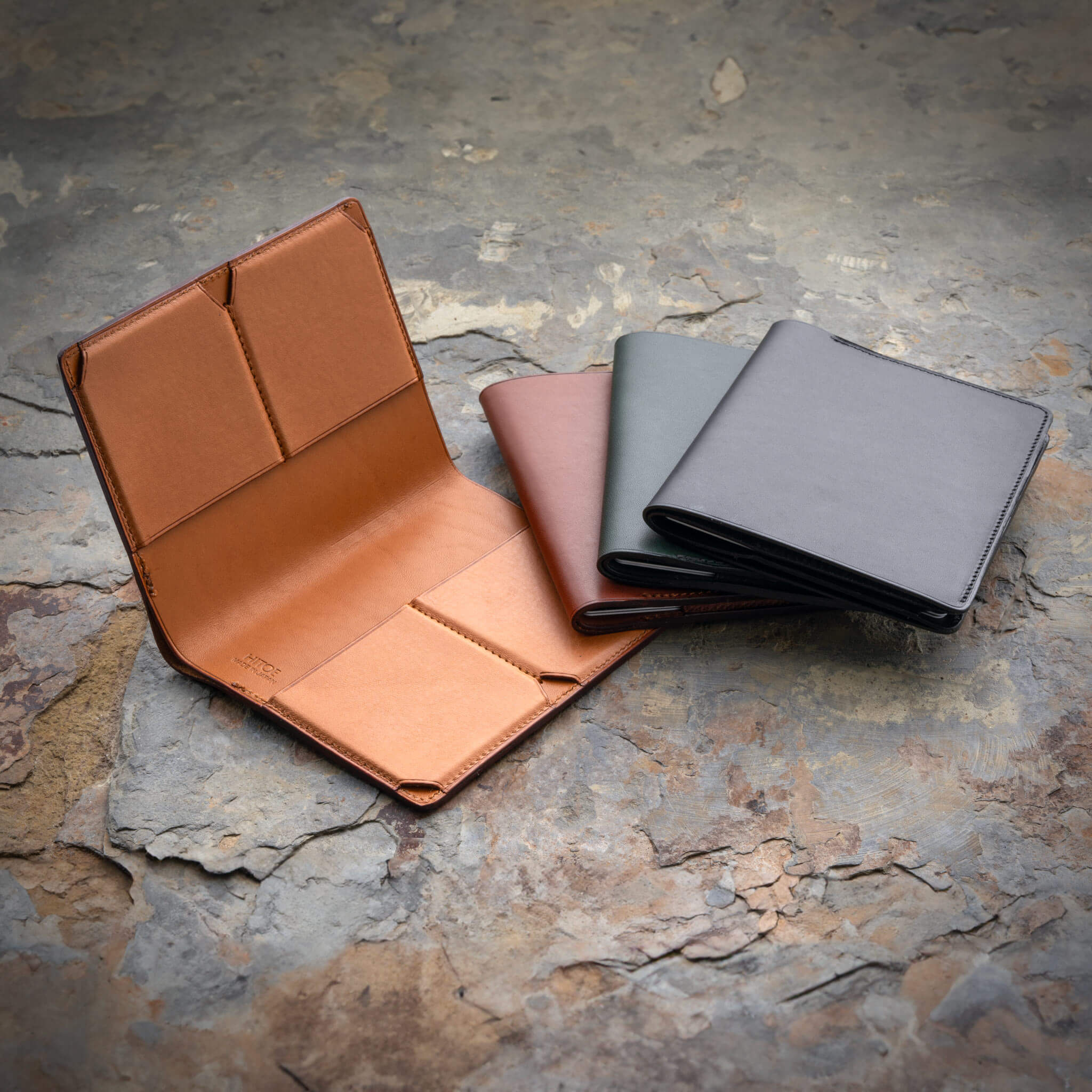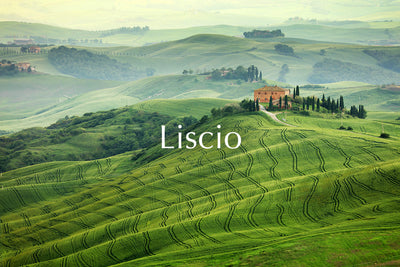





Thin short wallet
Hitoe® Quartet
Thin card case (billfold)
A bi-fold wallet without a coin pocket is called a " billfold ."
Four pockets hold eight cards, yet the billfold is slim
That is the " Hitoe® Quartet ."

Remains thin even when stored
The four card pockets do not overlap, resulting in a slim design thanks to the " Hitoe® (single) structure ."
・Thickness 9mm when storing 8 cards
Size: 120 x 94mm
Each card pocket can hold 1 to 2 cards, up to a maximum of 8 cards.

Minimalist design
The card to be stored is used as the core material.
Hitoe® Quartet utilizes the card pockets on all sides to use the cards as a card insert , which allows for a slim design.
When you put the cards in your pocket, the gaps between the cards bend slightly, allowing them to flex and move flexibly along with your body. This makes it harder for the cards to bend, preventing damage.

Pursuit of thinness
The ends are not "rolled" but rather have a "seam allowance". This is in pursuit of "thinness". If the edges are rolled, the size will be smaller, but the overlapping of the leather will increase, making the item thicker. This detail is faithful to the ideal we aim for.
Also, when you roll the card up, it is easy for the card to get caught on the edge of the leather, but with the seam allowance, it runs smoothly without getting caught.


Long-lasting and beautiful
Most wallet problems are caused by metal fittings and stitching. We do not use any metal fittings. Corners and edges that are prone to damage are made more durable by overlapping the outer and inner leather. Furthermore, there are no stitches on the folded parts that are subject to friction.
The seam allowance is extremely small, making the design less likely to lose its shape.

Beautiful details
The precise and delicate stitching, the dyed and polished edge (cut surface of leather), the smooth surface (underside of leather), the thin lines drawn on the edges with a hot iron (nenhiki) - beauty is pursued down to the smallest detail.

The banknotes remain intact
Banknotes can be stored directly in the large pocket.

Become a partner of Hitoe® Fold
Hitoe® Fold can hold up to 7 cards.
However, "I have too many cards and the Hitoe® Fold isn't enough..."
For such people, the Hitoe® Quartet is the perfect partner.
Hitoe® Quartet and Hitoe® Fold can store up to 7+8=15 cards.
Put receipts, important cards you don't want to stack, and cards you don't use often in a Hitoe® Quartet and put it in your bag.
Put your money and cards in the Hitoe® Fold and put it in your pocket.
Going out will be even more comfortable.
For those who need a few more cards, we also offer the Hitoe® Sextet, which holds 12 cards.

Smooth textured vachetta leather
Liscio means smooth in Italian. Made from traditional vachetta leather, the color and luster deepen the more you use it thanks to vegetable tannins and oils. The surface is smooth and finely grained, with natural color unevenness and natural marks , giving it an elegant and tasteful appearance like leather.
(Click on the " About Liscio's Leather " tab for more information)

Usage notes
The card pockets do not have gussets. Instead, they are made of thin, kneaded leather that is easy to stretch.
The dimensions are not very generous so it may feel a bit cramped at first, but you will soon get used to it, and once you do, it will fit just right and be comfortable to use.
The lid is designed to close tightly once the leather becomes familiar with it, so even if it is closed at first, the lid may open slightly.
Origins
Liscio is an Italian word meaning "smooth. The surface is smooth and fine, with natural unevenness in color, giving the leather an elegant and tasteful look.
Tanning and Manufacturing
Vacchetta leather has been used in the Tuscany region of Italy since the early 9th century. The cowhide is tanned with vegetable tannin extracted from chesnut and mimosa, and then soaked in oil slowly and finished with dyes. The more the leather is used, the more the oil soaks into the leather, deepening its color and luster.
Maintenance
Since it contains sufficient oil inside, oil care is not necessary unless you are concerned about scratches or dryness. We recommend dry brushing with a soft cloth on a daily basis.
Colors

Camel 
Chestnut 
Teal 
Black
Natural markings may be noticeable.
Choose options








 About Liscio Leather
About Liscio Leather specification
specification